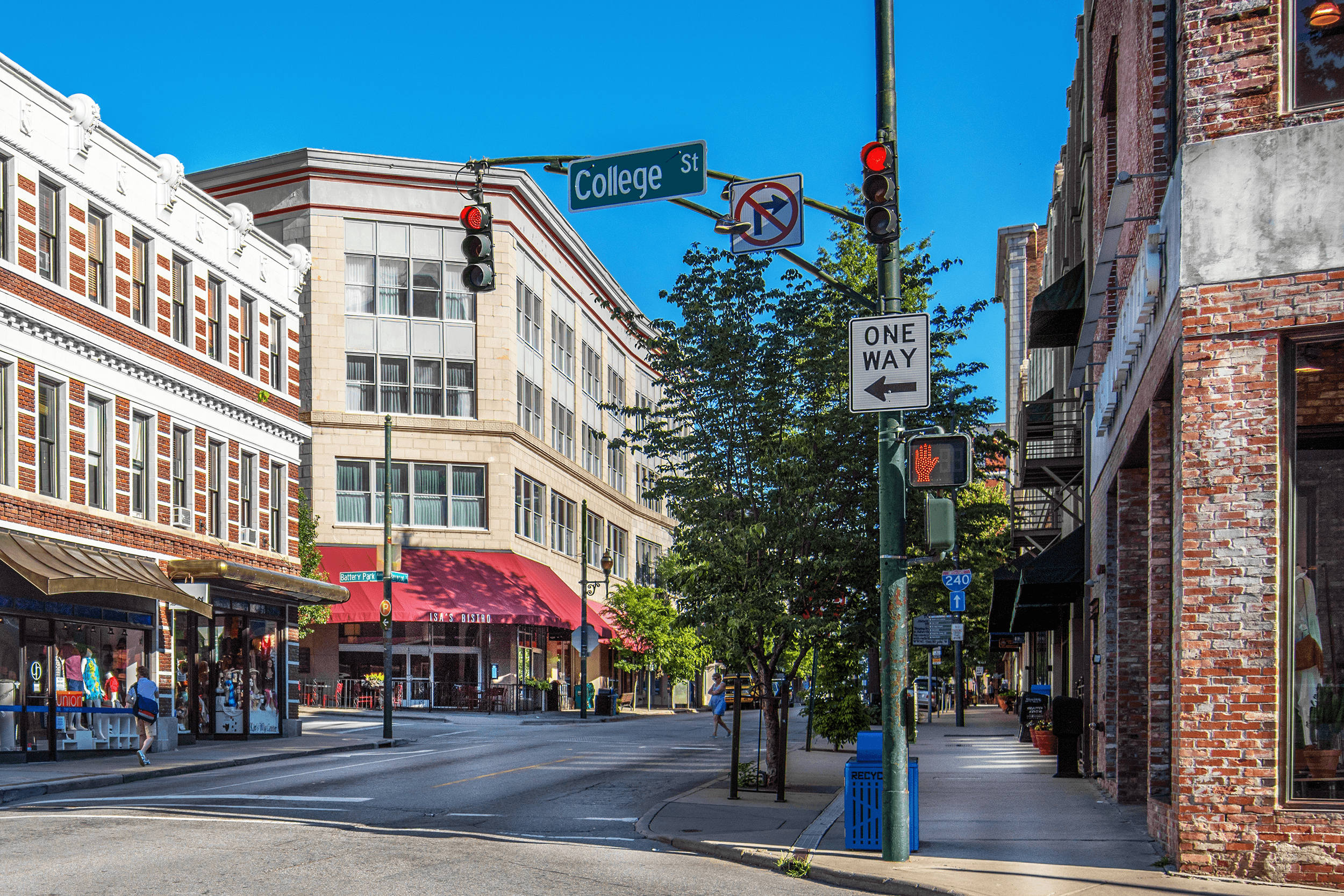The area around the Grove Arcade has probably changed the most since Edwin Wiley Grove (1850-1927) purchased the property in 1920.
It is here, where the realization of his grand vision of transforming Asheville from a mountain town to a major tourist destination can best be seen.
The area, where the Grove Arcade stands today, once was an 80-foot hill with a beautiful Queen-Anne style wooden hotel for the rich, called The Battery Park Hotel. It was from the porches of this hotel that George Vanderbilt once “resolved to make his home in the Land of the Sky.”
Soon after Grove purchased the property in 1920, it burnt down.
Seizing the opportunity, he started immediately to level the hill by removing up to 500,000 cubic yards of earth, a massive earth-moving project even by today’s standards. It took 21 months to complete the project, which resulted in a gently sloped area.
While the excavation was still ongoing, the new 14-story Battery Park Hotel was built, which opened in September 1924.
A 5-story retail center with a 14-story tower, the Grove Arcade, followed in 1926.
When Edwin Grove died in 1927, the base of the Grove Arcade was completed, covering an area of 269,000 square feet. Although the 14-story tower and the two remaining floors were never built, the Grove Arcade opened in 1929, offering a “fine collection of local shops and services.”
Over the years, the Grove Arcade became increasingly popular with over 70 shops at its peak.
To this day, the area around the Grove Arcade is a magnet for stores, galleries, restaurants, and bars.
In the 1920s the S&W Cafeteria was a newly emerging restaurant type, which originated on the West Coast. It was designed for speed, convenience and comfort. Architect Douglas Ellington designed the building and gave it a modern Art Deco look. The S&W Cafeteria is probably the finest example of an Art Deco style building in Asheville.
Architect Albert C. Wirth, who had just moved to Asheville in 1925, had to overcome two challenges in his first commission of designing the Flat Iron Building: the first was the odd lot and the second was to offer enough business rental space at this prime real estate location. How did he do it?
The Historic Bon Marché Department Store is a modern commercial building with 4 stories, which Edwin Grove built for his friend Solomon Lipinsky in 1923. The building was used as a department store until the mid 1970s. Today, the building is home to the Haywood Park Hotel, a 33-room boutique hotel.
Commissioned to build an impressive building, where the rich and powerful of the early 1900s could meet, Richard Sharpe Smith architected the three-story Miles Building with large columns on either side of the entrance and an equally impressive interior. Herbert Miles bought the building in 1919 and converted it to shops and office space. However, some remnants of the original building can still be seen today.
The 7,200-seat multi-purpose arena known as the U.S. Cellular Center hosts many of the large concerts, meetings, trade shows, athletic competitions and artistic performances. It is the largest event venue in the area. The smaller Thomas Wolfe Auditorium is also the home of the Asheville Symphony Orchestra. The Thomas Wolfe Auditorium offers many musical performances throughout the year.
During the building boom of the 1920, the George Vanderbilt Hotel was part of a newly created retail, business and hotel district formed by the Grove Arcade and the Battery Park Hotel on one side and the George Vanderbilt Hotel on the other. Not much of the past can still be seen today after the face of the building was completely remodeled in the late 1960s, when it was converted into an apartment building.
Although not an active hotel since 1972, today the former Battery Park Hotel houses businesses on the first floor and private senior apartments above. Still worth a visit today, the site is most probably one of very few locations, where Asheville’s transformation from a romantic mountain town to a major tourist destination becomes visible.
Walking along the Grove Arcade is a little bit like walking back in time. After a $20 million restoration, visitors can now experience the Grove Arcade’s past grandeur once again. Enjoy shopping or a wonderful lunch or dinner in one of the many restaurants.
Considered the largest free standing elliptical dome in North America, the Basilica of Saint Lawrence is named after the famous Deacon and Martyr Saint Lawrence, who in the third century gave his life for the poor of the Church. Visitors may notice the unique atmosphere in the Basilica which the wonderful tile work helps to create.
When Samuel Kress founded his retail business, his stores not only offered customers in smaller cities quality goods at the lowest possible price, but he also wanted the buildings themselves to stand out architecturally. The decorative tile work and signage are some examples, which can still be seen today.











